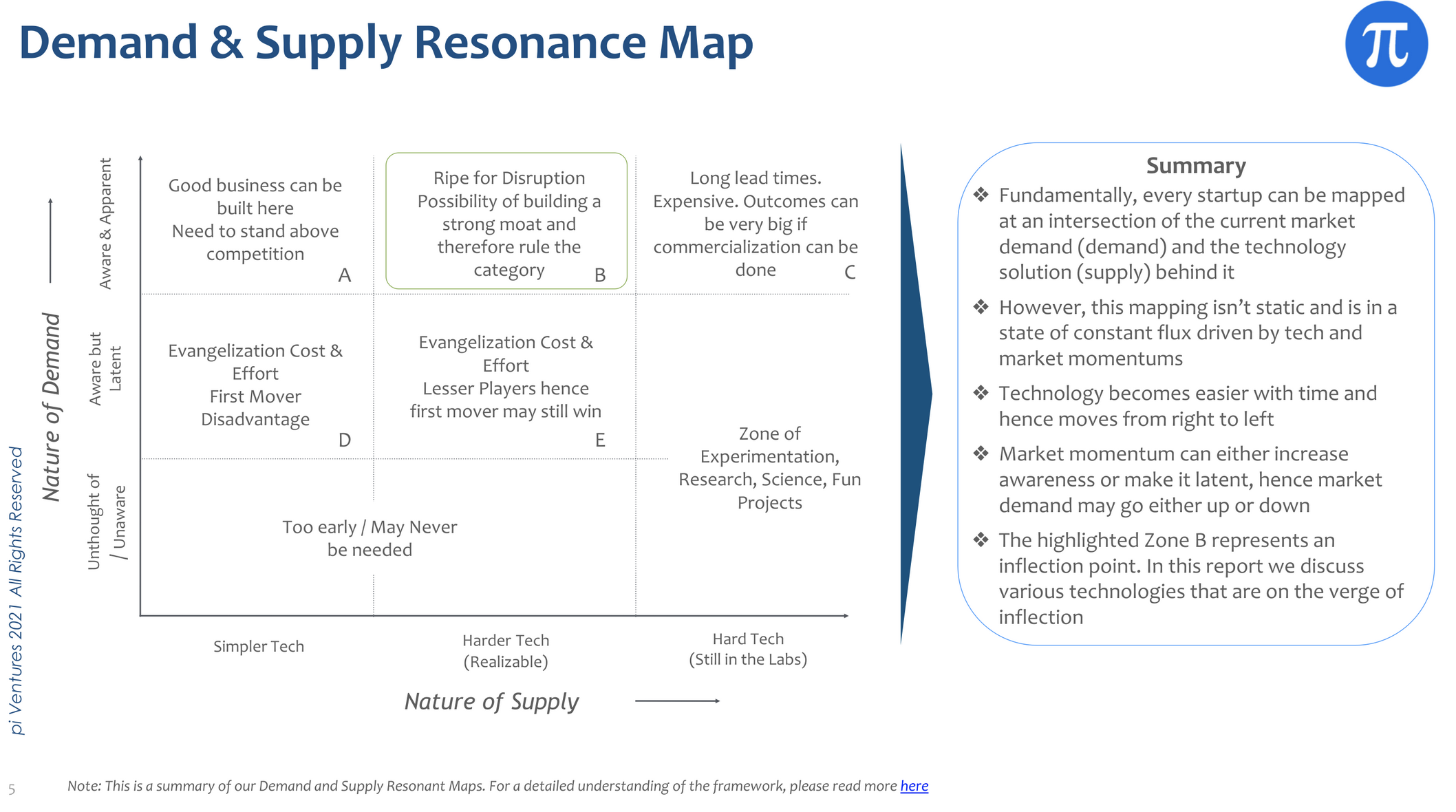With so much of the startup news cycle focused on unprecedented funding round sizes and record amounts of time bootstrapping, we don’t often step back from the numbers to have a hard think about innovation. But today, that’s precisely what we are going to do.
The Exchange gained early access to pi Ventures’ Deep Tech Shifts 2026 report, which identifies 15 deep tech sub-sectors the firm believes will reach an inflection point by 2026.
The study is backed by research, but pi Ventures’ founding partner Manish Singhal says its findings are also informed by conversations with entrepreneurs.
The Exchange explores startups, markets and money.
Read it every morning on TechCrunch+ or get The Exchange newsletter every Saturday.
 Besides diving deep on the report this morning, we’ll also share what we learned from interviews with Singhal, pi’s managing director Roopan Aulakh, and principal Shubham Sandeep.
Besides diving deep on the report this morning, we’ll also share what we learned from interviews with Singhal, pi’s managing director Roopan Aulakh, and principal Shubham Sandeep.
Predicting 15 shifts
Below are 15 sectors in which pi Ventures expects “disruptive innovation that will bring about key shifts in global businesses” in the next half-decade:
- Alternative protein: superfluous to vital
- Blockchain: promising to mainstream
- Brain-computer interface: measurement to insight
- Climate tech: incidental to critical
- Data privacy: identifiable to anonymous
- Energy storage: Li-Ion to alternative chemistries
- Enterprise workflows: human to human + Al
- Healthcare screening: reactive to proactive
- MLOps: in-house to managed services
- Nature co-design: materials to biomaterials
- Quantum computing: supremacy to advantage
- Robotics: automation to cognition
- Space tech – in-space: deployment to in-space management
- Space tech – launch: customization to democratization
- Synthetic Content Creation: casual to commercial
First off, let’s clarify that “nature co-design” refers to biomaterials, and “synthetic content creation” is about AI-generated text, images and audio, which pi expects to escalate from casual use cases to commercial.
A matter of timing
Singhal told TechCrunch that the firm recently began deploying its second fund of $100 million — a significant step up from its initial fund, which invested $30 million in 15 companies based in or with a connection to India. This time around, pi’s goal is to invest into 25 early-stage startups.
Based in Bangalore, pi’s website boasts of “pioneering deep tech investments in India”. Not all the companies in its portfolio are based there, but they all have a strong connection with the country: ML-powered consumer trend prediction platform AI Palette is based in Singapore, with an engineering hub in Bangalore, while mental health app Wysa has offices in Bangalore, Boston and London.
Singhal says pi’s goal is to back companies that are “global innovators” – aiming beyond India or any single market, and leveraging deep tech. “We want to back disruptive innovation, rather than incremental innovation,” he said. On the other end of the spectrum, pi’s site notes that it doesn’t invest in “pure science or research” — it is looking for the “intersection of scalable businesses and disruptive technology.”
Timing is key to what pi is doing, a fact that underpins the 67 pages of its new report. “If you invest too early in an innovation, then you will have sub-optimal returns,” Singhal said. “If you invest too late, you may also end up getting sub-optimal returns, because it is no longer a cutting-edge thing. If investment and the timing of innovation getting to a resonance point come together, then good things happen.”
A framework for inflection points
This is where pi Ventures in-house framework comes in, featuring a ‘demand and supply resonance map’ to analyze deep tech shifts. You will see it at play in the two examples we’ll explore, but the general idea is summed up in the chart below:

Image Credits: pi Ventures
I found this to be a useful tool to analyze trends, and I think it could be of use for investors with different time horizons and theses, too.
As it previously explained in a blog post, pi Ventures’ area of interest is “the art of possible.” Dubbed as such by one of its limited partners, Raj Shah, that falls under zone B, and which “it is obvious to look at [ … ] for a good balance between market demand and state-of-the-art technology,” as well as zones C and E, “to account for momentum as well.”

